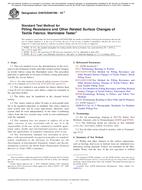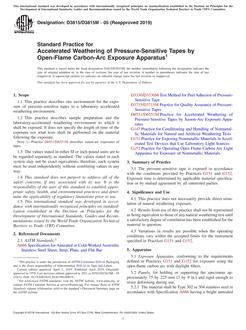1.1 This test method covers the chemical analysis of engine coolant for chloride ion by high-performance ion chromatography (HPIC). Several other common anions found in engine coolant can be determined in one chromatographic analysis by this test method.
1.2 This test method is applicable to both new and used engine coolant.
1.3 Coelution of other ions may cause interferences for any of the listed anions. In the case of unfamiliar formulations, identification verification should be performed by either or both fortification and dilution of the sample matrix with the anions of interest.
1.4 Analysis can be performed directly by this test method without pretreatment, other than dilution, as required by the linear ranges of the equipment. Table 1 indicates several applicable anions and approximate detection limits.
1.5 The values stated in SI units are to be regarded as standard. No other units of measurement are included in this standard.
1.6 This standard does not purport to address all of the safety concerns, if any, associated with its use. It is the responsibility of the user of this standard to establish appropriate safety and health practices and determine the applicability of regulatory limitations prior to its use.
TABLE 1 Analytes and Minimum Detection Limits
| Analyte | Detection Limit, mg/LA |
|---|---|
| Chloride (Cl−) | 2.0 |
| Nitrite (NO2−) | 5.0 |
| Bromide (Br) | 4.0 |
| Nitrate (NO3−) | 7.1 |
| o-Phosphate (HPO4)2− | 20.0 |
| Sulfate (SO4)2− | 8.0 |
| Oxalate (C2O4)2− | 12.0 |
A Determined using 100-μL sample volume. Sample diluted 99 + 1 (v/v) with chromatographic eluant 30-μS/cm full scale, suppressed conductivity detection. Dionex AS4ASC column with AG4ASC guard columns. Other systems will require MDL determinations using chosen dilution factors, eluants, columns, and detector.
Product Details
- Published:
- 03/01/2009
- Number of Pages:
- 6
- File Size:
- 1 file , 110 KB
- Redline File Size:
- 2 files , 210 KB


